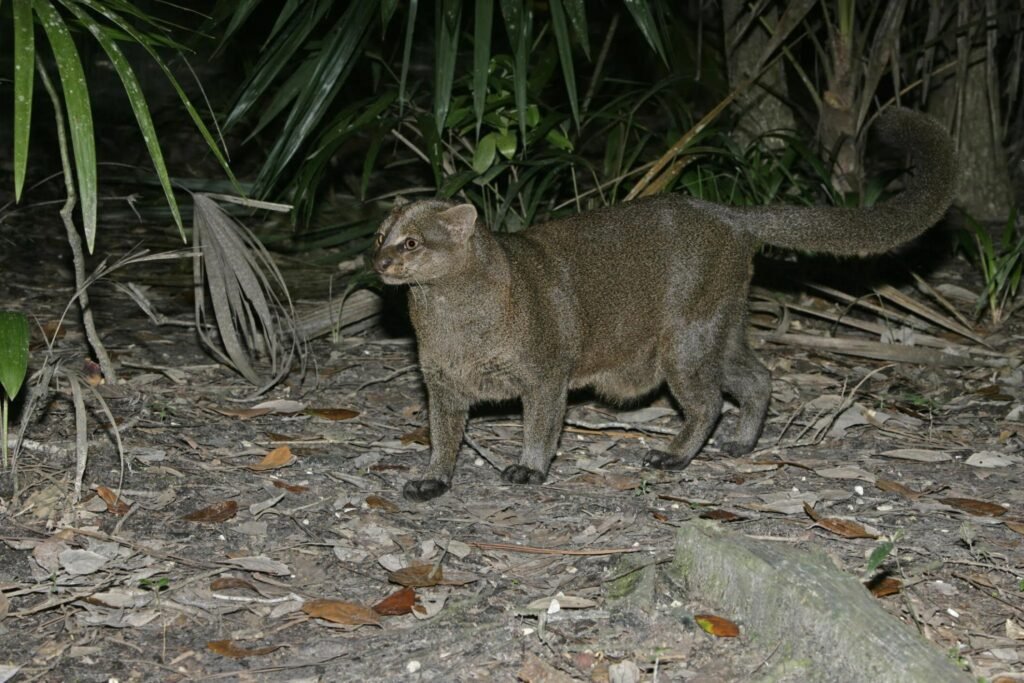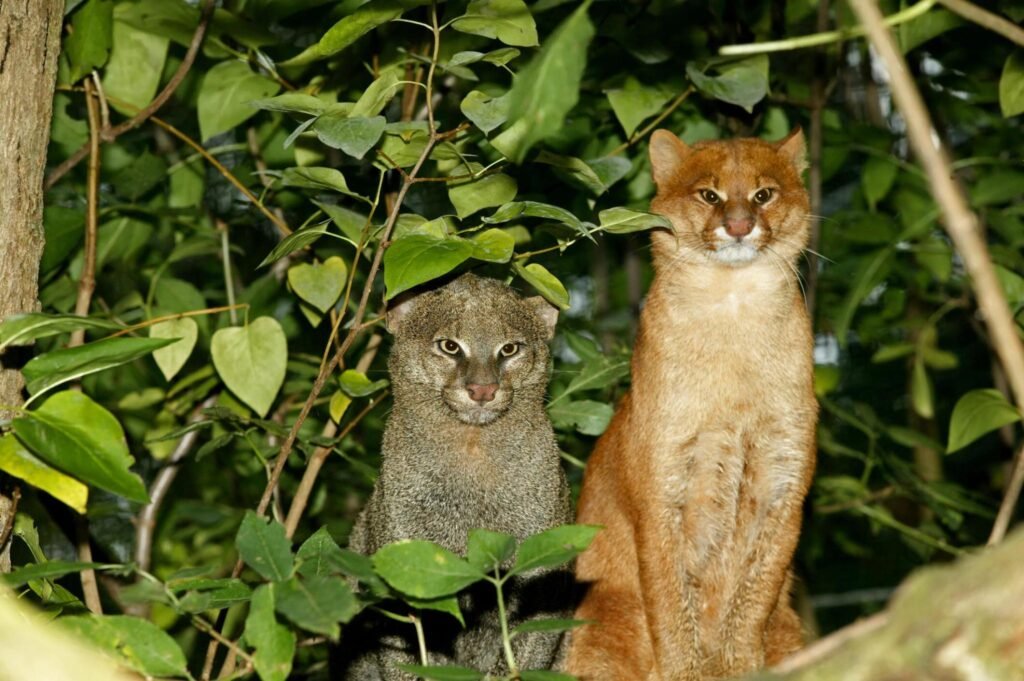
The jaguarundi, Herpailurus yagouaroundi, is a small to medium-sized wild cat native to the Americas, ranging from southern Texas and Mexico down through Central and South America. Unlike most felines with patterned coats, the jaguarundi typically has a plain, unspotted coat that can vary in color from reddish-brown to dark grey, often leading to confusion with mustelids like weasels or otters due to its elongated body, short legs, and small, flattened head. They are primarily diurnal, an unusual trait among wild cats, and are highly adaptable, inhabiting a variety of environments including forests, savannas, and scrublands, often near water sources. Their diet is diverse, consisting mainly of small rodents, birds, reptiles, and amphibians, and they are agile climbers, though they primarily hunt on the ground.

Jaguarundis play an important role in the ecological balance of their diverse habitats. As active predators of small prey, they help to control populations of rodents, birds, and other small animals, which can prevent overpopulation and the potential spread of disease. Their adaptability and ability to thrive in modified landscapes make them a valuable component of ecosystems experiencing human impact. While not as widely recognized as larger felines, the jaguarundi’s presence indicates a healthy small-prey base and contributes to the overall biodiversity and stability of the local food web. Protecting jaguarundis and their habitats helps to maintain the delicate ecological balance in the varied environments they call home.
Every day, wild cats around the world face threats like habitat loss, poaching, and natural climate progression. But hope isn’t lost. With your support, we can protect these majestic animals and preserve their habitats.
Join our growing community of wildlife champions and help create a safer future for all 40 wild cat species.
Zoo-EV is a nonprofit organization dedicated to the protection and preservation of the world’s 40 wild cat species through education, community engagement, and conservation initiatives. Zoo-EV is recognized as a 501(c)(3) tax-exempt organization by the IRS, with the Employer Identification Number (EIN) 88-3636567.